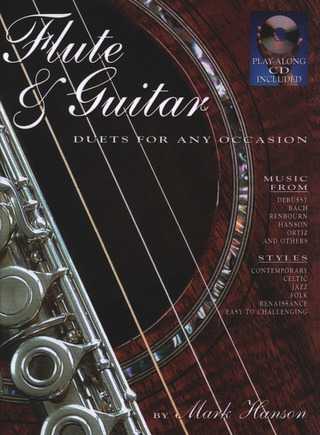Johann Sebastian Bach (1685 – 1750) was a German
composer, organist, harpsichordist, violist, and
violinist of the Baroque period. He enriched many
established German styles through his skill in
counterpoint, harmonic and motivic organisation, and
the adaptation of rhythms, forms, and textures from
abroad, particularly from Italy and France. Bach's
compositions include the Brandenburg Concertos, the
Mass in B minor, the The Well-Tempered Clavier, his
cantatas, chorales, partitas, Passions, and...(+)
Johann Sebastian Bach (1685 – 1750) was a German
composer, organist, harpsichordist, violist, and
violinist of the Baroque period. He enriched many
established German styles through his skill in
counterpoint, harmonic and motivic organisation, and
the adaptation of rhythms, forms, and textures from
abroad, particularly from Italy and France. Bach's
compositions include the Brandenburg Concertos, the
Mass in B minor, the The Well-Tempered Clavier, his
cantatas, chorales, partitas, Passions, and organ
works. His music is revered for its intellectual depth,
technical command, and artistic beauty.
The Mass in B minor (BWV 232) by Johann Sebastian Bach
is a musical setting of the complete Latin Mass. The
work was one of Bach's last, not completed until 1749,
the year before his death. Much of the Mass gave new
form to some of the vocal music that Bach had composed
throughout his career, dating back (in the case of the
"Crucifixus") to 1714, almost always extensively
revised. To complete the work, however, in the late
1740s Bach composed new sections of the Credo such as
"Et incarnatus est". The completed Mass was his last
major composition.
It was unusual for composers working in the Lutheran
tradition to compose a Missa tota and Bach's
motivations remain a matter of scholarly debate. The
Mass was never performed in totality during Bach's
lifetime; the first documented complete performance
took place in 1859. Since the nineteenth century it has
been widely hailed as one of the greatest compositions
in history, and today it is frequently performed and
recorded.
The Benedictus (Part Iv No. 2) is an Aria for tenor
with obbligato instrument in B minor, no autograph
tempo marking, 3/4 time signature. Butt writes that
Bach "forgot to specify the instrument" for the
obbligato; Stauffer adds the possibilities that Bach
had not decided which instrument to use or that he was
"indifferent" and left the choice open.
The Bach-Ausgabe edition assigned it to the violin, and
Stauffer suggests this choice may have been influenced
by Beethoven's use of the violin in the Benedictus of
his Missa solemnis. Modern editors and performers have
preferred the flute; as Butt notes, the part never uses
the G-string of the violin, and modern commentators
"consider the range and style to be more suitable for
the transverse flute."
Although originally written for chorus (Soprano &
Tenor) and Continuo, I created this arrangement for
Woodwind Trio (Flute, Bb Clarinet & Bassoon). |







